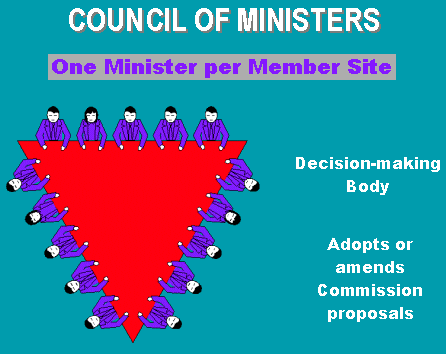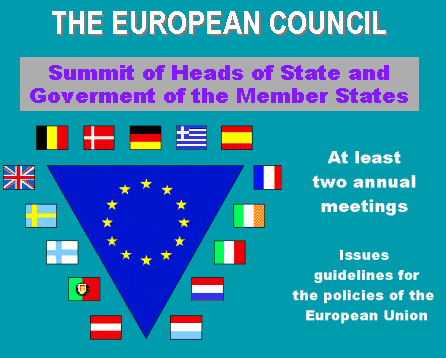
The European Integration |
The Origins of European Integration |
EU Institutions
The European Commission The European Parliament The Council of the European Union The Court of Justice The Court of Auditors The European Central Bank Advisory and Technical Bodies |
|||||||||||||||||||||||||||||||||||||||||
| EU Institutions | |||||||||||||||||||||||||||||||||||||||||||
| The Decision Making Process | |||||||||||||||||||||||||||||||||||||||||||
| EU Policies: from A to Z | |||||||||||||||||||||||||||||||||||||||||||
| The EU in the World | |||||||||||||||||||||||||||||||||||||||||||
The Council of the European Union
The Council of Ministers enacts EU laws, acting on proposals submitted by the Commission. Since the implementation of the Maastricht Treaty, its official name is the Council of the European Union. Comprising Ministers from each member state, the Council strikes a balance between national and Union interests. Different Ministers participate in the Council according to the subject under discussion. Agricultural Ministers, for instance, discuss farm prices in the Agriculture Council, and Economic and Finance Ministers discuss monetary affairs in the ECOFIN Council. The Ministers for Foreign Affairs provide overall coordination in the General Affairs Council. They are also responsible for foreign policy in the framework of the Common Foreign and Security Policy. Presidency: Each Government acts as President of the Council for six months in rotation. Coreper: The Council is assisted by a Committee of Permanent Representatives (Coreper), comprising member state officials holding ambassadorial rank, and a Secretariat, with a staff of about 2000.
The European Council The European Council brings together Heads of State and Government and the President of the Commission. It meets at least twice a year, at the end of each EU member state's six-month presidency. The Single European Act formalized the European Council, which was not foreseen in the original EC treaties.
| |||||||||||||||||||||||||||||||||||||||||||

